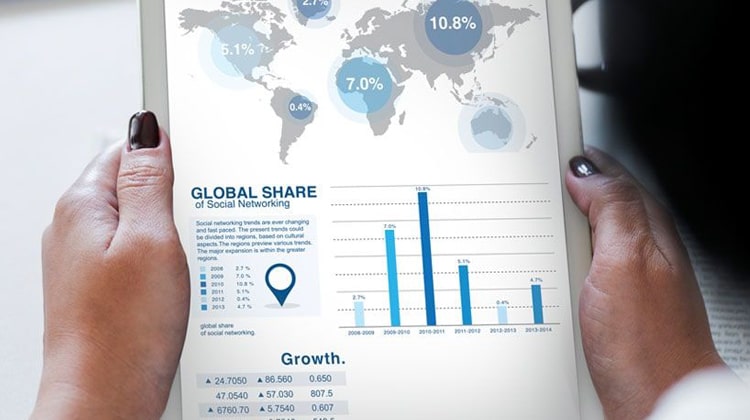
Robotic Process Automantion
Robotic process automation is set to change the way companies manage their operations. Any operational activity with manual work involving the use of computer systems, while also being repetitive in nature, is a candidate for robotic process automation, or RPA.
RPA technology is rapidly being deployed across banking, insurance,healthcare, telecom and other industries and is bringing in benefits likeoperational efficiency,manual effort reduction, reduced error rates and customer satisfaction.
How does it work?
RPA has evolved from various technologies used for application testing and workflow automation. The best RPA tools now can work with any software platform or system and mimic interactions a human has with the user interface of the applications required for a business process. Robots use methodologies, which vary from tool to tool, that uniquely identify the sources of data and the input and output fields that are part of a user’s workflow. Those methodologies let robots replicate human activity on a computer system, if the exact steps are defined as a script or a flowchart. A robot’s activity is highly customizable, and can be either triggered as per a defined schedule, or event driven.
RPA technology enables a virtual workforce that works faster than a human worker, does not make mistakes, requires no monitoring and can work around the clock. The virtual worker’s activities can be logged and operational metrics can be closely tracked
What processes are suitable for robotics-driven cognitive automation?
Here are a few examples of processes that lend themselves to cognitive automation:
Front office: Cognitive automation technologies that are used for front-office processes usually aim to replicate human interaction. Examples are chatbots and voice recognition-based applications. Robots in front-office activities can automate simple transactions and optimize the turnaround time for more complex activities.
Back office: Most back-office processes are ideal for RPA technology. The sweet spot for traditional rule-driven robotic automation are those processes that have high volume and low complexity, involve a limited number of exceptional scenarios and deal with structured data. Examples include data entry and reporting processes, which can be made highly efficient with robotic automation. Additional efficiencies can be achieved when RPA is combined with a cognitive engine to automate back-office processes.
IT operations: Rule-driven IT operational activities, such as periodic application health checks and reports, can be automated by a traditional RPA tool. A key consideration when choosing an RPA tool for an IT environment is the ability of the tool to handle virtual desktop and remote access environments. There are specialized cognitive tools that can respond to an IT environment issue, do an automated root-cause analysis and resolve issues without requiring human intervention.
How does adding the cognitive element to RPA improve processes?
Optimization: Cognitive RPA can automate and optimize the turnaround time for processes that have semi-structured and unstructured data as inputs. Examples of such processes are those that involve the extraction of information from documents, such as checks and invoices, and email content processing.
Enhancement: The addition of a self-learning, cognitive component to processes can help improve the quality and value of those processes over time. For instance, an anti-money laundering process can be automated with an RPA tool, and further enhanced with a machine learning engine to reduce false negative rates.
What are the different types of cognitive technologies?
Cognitive is a broad term but the major technologies used for cognitive robotic automation include optical character recognition (OCR), handwriting recognition, image recognition,natural language processing and neural networks. Cognitive technologies can be categorized into two types:
- Preconfigured cognitive systems: These are technologies which use sophisticated algorithms or have pretrained machine learning-based models to achieve human-level efficiency in tasks that require cognition. OCR is an example of this type.
- Self-learning systems: These technologies automatically discover patterns from historical process input data and the iterative observation of newer input data. This discovery capability enables self-learning systems to improve performance over time. For instance, a neural network can be fed with a database of valid and fraudulent banking transactions, and then start to predict fraudulent transactions.
Cognitive robotic automation can involve more than one of these technologies working in layers. For instance, automated invoice processing would involve a first layer of OCR-based conversion to make the content readable and a second machine-learning layer to learn and derive the structure of invoices.
A key point to note: It’s rare for a cognitive RPA implementation to completely automate the process end to end, as cognitive tools are hardly ever 100% accurate. Cognitive robotic automation is human-assisted. Most data-entry driven processes consist of two stages, the maker, in which an operator enters data into a system, and a checker, in which the accuracy of the data entered is verified. The manual effort in the maker stage can usually be eliminated, but a human checker stage is required in most cases.
How do I implement cognitive RPA technology?
The RPA tool, and the cognitive component for automating a process, should be suited to the process’ requirements. Important factors are the nature of the inputs of the process, process complexity, the level of structure of the input data, and the applications and systems that are used for the process. Leading RPA tools are also starting to incorporate cognitive components like OCR and machine-learning engines. A proof of concept driven approach can kick start your robotic program, providing a quick way to evaluate the benefit of robotics and showcasing its value to stakeholders in your organization.












